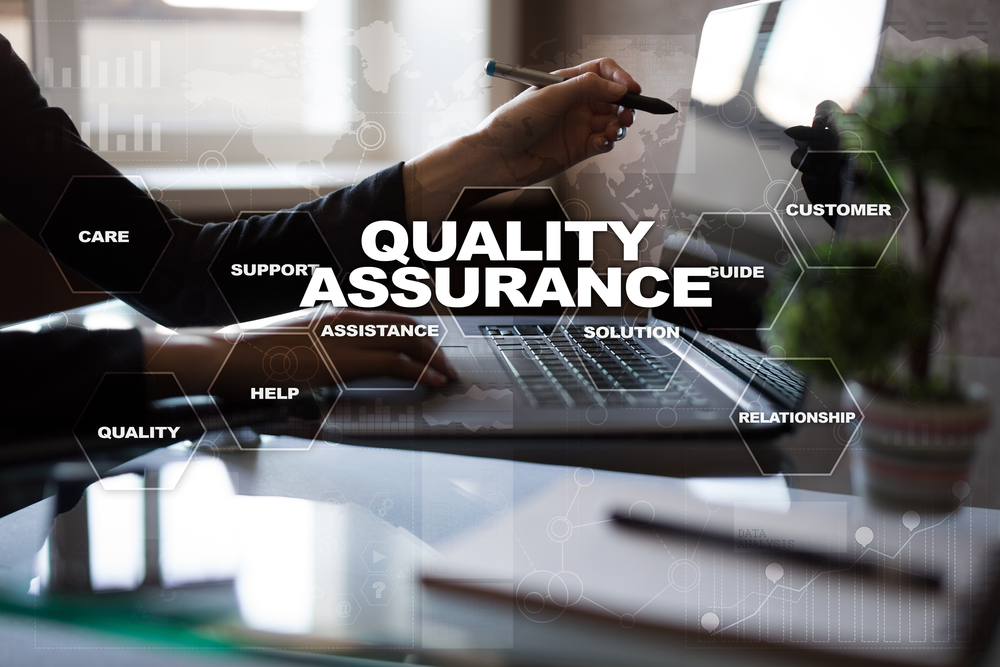Internet technologies have changed our lives in more ways than we used to think. Compared to the breakthrough that occurred 50 years ago with the introduction of personal computers, modern advances in digitalization impacts all aspects of everyday life. Mobile applications and Wi-Fi technologies offered by software developers not only let users stay in touch around-the-clock but enable fast communication among appliances as well. The Internet-of-Things has become an essential part of daily routine. A tech-driven connection is mobilized when we drive a car, conduct warehouse inventory, or simply regulate the climate control of premises. This list of IoT implementation is endless as it is still growing. Concepts like a smart home or smart city are only the beginning of the pathway to the world where household and public equipment will no longer need manual control.

Security should be the highest priority in the digitalized world
Recent research shows that last year usage of IoT devices comprised about 26.6 billion items. And it is predicted that the number will grow, and by 2021 there will be 35 billion gadgets supported by IoT. However, this global connectedness and interaction among individual pieces of equipment come in hand with such risks as a network or electric failure, system break-ins, and leakage of sensitive personal data. Therefore, software developers aimed to integrate the IoT ability into their applications are expected to ensure reliability and safety. The potential of the IoT is enormous, but the procedure of uniting various devices into one system calls for Quality Assurance. We live in a world where sensors communicate with heavy equipment, devices interact with various datasets, and appliances interconnect among themselves. That is why robust testing is required to ensure that each component of such a system performs effectively alone and harmoniously with each other.
What does Quality Assurance stand for?
It is a thorough analysis of software applications based on several factors that include consumer needs and behavior, market tendencies, and routines connecting industries. Being an internet technology, the IoT has to examine data analytics to make sure that would-be integration of various devices and uniting the network can cope with the technological evolution. The main purpose of implementing QA to the IoT is to examine new technologies and define their validity. It helps to enhance the existing system by inspecting the interaction among its core elements: thing (an object), communication (interaction), and computing (mathematical analysis).
- “Thing” represents any physical object that has a sensor, which in turn can connect the object with an external environment. In other words, it is a device or an appliance with a built-in feature that communicates with a server or other technology.
- “Communication” is a key networking component that provides the transmission between two “things”, or between the “thing” and external environment via a specific protocol that depends on the type of the utilized network. Simply put, it can be a dial-up connection, LAN, Wi-Fi, or mobile network provider.
- “Computing” imposes behavior and is carried out on either user-side (smartphone, laptop, and stationary computer) or server-side. Which in-turn processes and evaluates the input data. It ought to make smart decisions based on complicated deductions within an individual system. That, subsequently, outlines the correlation between the actual value and the results of the user behavior analysis.
The simplest example of that concept is a navigating system of a vehicle. Where the “thing” is hardware embedded in the dashboard. It interacts with a satellite through the network, and the computing element provides a driver with an available route, which represents the outcome of computing.

What kinds of testing Quality Assurance specialists perform?
- Compatibility validation is carried on to examine whether the device and software of IoT can successfully interact within a specific system that is utilized to test a given product and the subsequent service delivery. To validate the relationship between the program and the hardware it communicates with, a QA consultant needs to analyze the sensor’s extensive interactions within the instantaneous IoT environment.
- Users’ interaction with a device testing is carried out to validate that the product conforms to two sets of standards. The first set represents market-shaped standards, which evaluate the product’s functions, consistency, and users’ opinions of their experience with the product. The second set of standards is government-imposed and requires the product to be examined on its compliance with the state laws. QA specialists need to experiment with hardware and the related program on devices that will comprise the digital system.
- Interoperability across different domains assesses the way various devices contact among themselves and the way they interact with the digitalized environment. This assessment is carried out to check how the two layers (device and network) interact in terms of compatibility, safety, and encryption.
- Security QA is carried out to validate network and system reliability in terms of keeping users’ data safe. It must comply with governmental regulations as well. This assessment is needed to see what measures have been taken to ensure data privacy. It is known that hackers target such systems to gain access to sensitive data like financial standing, medical records, and personal files. QA specialists run various tests to ensure that the service is highly reliable and secure.
- Users’ familiarity with the device tests how the product, delivered service, or the offered system itself behaves within various networks that are based on large datasets containing user-side experience and server-side functionality.
- Acceptance by surroundings testing is carried out to examine whether the product’s functionality scrutinized in a closed and limited environment is the same when it is tested in an authentic environment of the open market.
QA specialists’ ultimate goal is to test the system from the user usability point of view. Gadgets ought to be scrutinized for any exposure to a power drain or data leakage. At the same time, they should not be challenging to operate. Functions, notifications, and data sync ought to be in a way that benefits users’ awareness about the IoT system.

Test that must be carried out to validate IoT functionality
As it happens, the IoT system can consist of various types of an appliance from a consumer product to industrial equipment. But operating devices are usually very small and have distinctive form factors. Which in turn makes the usability testing procedure challenging.
Connectivity Testing
The main priority of testing wireless signal is to find out what will occur in case of a weak or missing connection. Or when there are several devices trying to interact with each other simultaneously. Connectivity must be solid and safe to ensure effective transmission of information. The results of such testing help to eliminate possible glitches in the system.
Interoperability testing
This one is carried out to ensure the aptitude of the system’s devices, various external devices, and apps to maintain the required functionality among themselves. One of the features that make IoT so appealing is its ability to utilize a spectrum of connectivity. Devices used in the IoT system support multiple mobile platforms regardless of hardware or firmware. Therefore it is necessary to test as many devices as possible to ensure smooth functioning. It involves ensuring the interactivity of all elements of the system without damaging their performance.
Performance testing
It allows validating the response time of devices and applications within the given range. One of the most important aspects of such testing is to confirm that data reading, writing, and retrieval speeds are high enough to ensure high performance. IoT gadgets have fewer resources due to their size. Most often, they consist of wireless radio, microchip, and a small battery. So, developers have to make sure that the utilized software’s function is unhindered. Therefore, they test the responsiveness and the quality of the program code used.
Security Testing
Such a highly sensitive system is often targeted by hackers because of its rich database. Among the usual vulnerabilities that have to be tested against a possible data-leakage are inappropriate data encryption, weak password requirements, or password-free interface accessibility. Furthermore, it is a widely used practice to employ Bluetooth feature on the device to ensure Wi-Fi connection. It means that the interaction between a gadget and the hardware now goes through the cloud API. Which in turn necessitates a check on how private and sensitive data are handled within the cloud. Whether it is properly stored and secured against possible leakage. It calls for a holistic approach that includes checking private and public APIs on any potential risks.
All tests mentioned above ensure that IoT is functioning properly and there are no threats whatsoever to affect its efficiency. That is why it is highly recommended to implement them. If you do not have your tech team, find a reliable vendor to test your product. NIX Solutions can enhance its standing on the market, attract potential investors, and advance future development.
